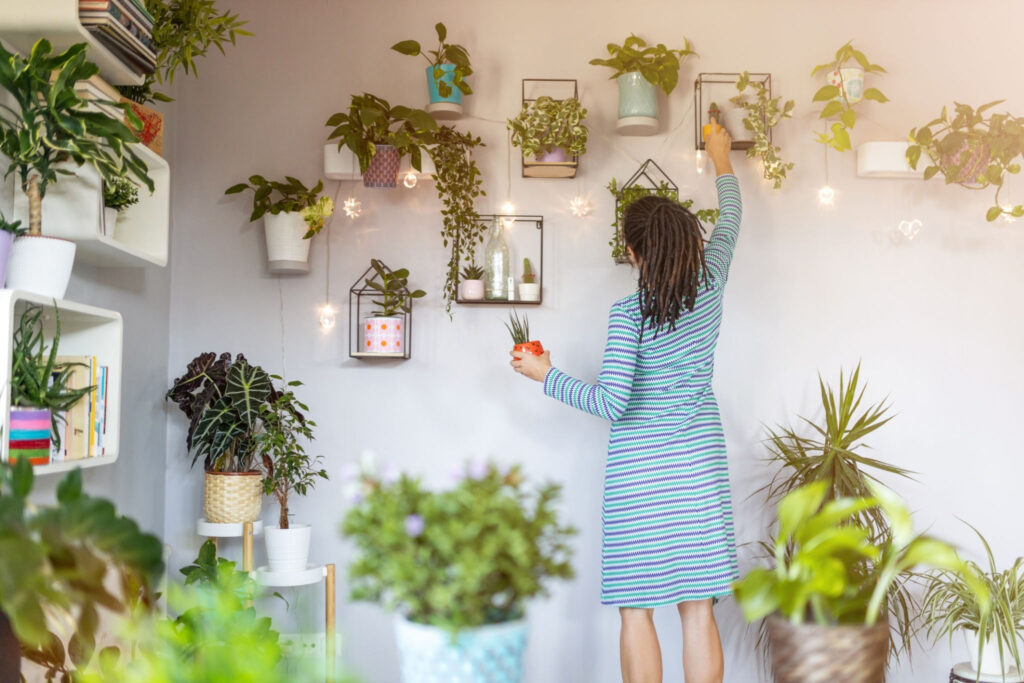Houseplants and indoor plants are a great way to spruce up your interior spaces, as they give texture and color to any room. They give warmth, softening transitions between areas, and can be a focal point. It’s imperative that you also select the right gardening pot, which can make or break the interior design.
But did you know that pots can make or break your plants as well? What happens if a pot is too big for a plant anyway?
Read on to learn all about the importance of pot sizes for your plants.

What Happens If a Pot Is Too Big For a Plant?
The pot’s size is an important factor to consider when planting in a pot, as it’s directly related to plant growth. For instance, if the pot’s size is too small, then the nutrients in the soil would be quickly absorbed, along with other issues like its roots being rootbound with the pot, giving the plant fewer nutrients needed for growth.
Furthermore, smaller pots have shown a significant difference in flower and fruit-bearing, with fewer and/or smaller fruits growing on plants if placed in pots too small for it.
How about in a bigger pot? Won’t that be beneficial for a plant?
It might seem like larger pots are better to avoid crowded roots. However, this can also negatively affect your plant’s growth.
When you have a pot too large, it may hold too much water in the soil, taking too long to dry. Because of this, it can result in bold growth, root and rot diseases. Furthermore, an oversized pot will make it tough to keep soil packed around your plant’s roots and also have the plant look odd, as it’s out of proportion to the pot.
Here are the exact consequences of placing your plant in a pot that’s too big for them:
- Rooting problems happen during transplanting, as roots weren’t untangled correctly or have been damaged. There’s also a higher chance of roots developing root rot since the soil would retain more water in a big pot.
- Slow growth can happen from bigger pots, since it will take plants more time to pull up nutrients absorbed in the soil, causing stunted growth. Stunted growth can happen when overwatering plants, and gardeners may be more likely to overwater in larger pots, causing stunted growth, root rot, or even fungus or bacteria.
- As mentioned, overwatering is an issue in bigger pots, which can also kill the roots and your plant. Besides this, the overwatered pot and soil are an invitation to bugs and pests that would harm the plant roots.
Don’t Plants Grow Bigger in Large Pots?
Some people claim that their plants grow bigger in pots too large for them. However, this depends on the plant species you’ll be getting. But even then, too big of a pot will mean there’s more water available, with the soil remaining moist for a long time. As mentioned, this results in root rot.
But, if you have a plant that’s supposed to grow bigger, what do you do? It’s much better to place the seed in a small pot and transplant it to a larger pot once it continues to grow prominent. With indoor plants that don’t grow much, then placing them in an even bigger pot can result in root rot problems and/or fungal and bacterial diseases.
If you’re thinking that plants grow bigger in bigger pots immediately, you have to remember that plant growth is dependent on root development. Plants will develop their roots and the plant continues to grow.
When plants are in a smaller pot, the roots are pot-bound, not having enough space for growth. If repotted to a bigger pot, the root system develops there, covering the soil mass and having the plant grow.
It isn’t because of the bigger pot that the plant grows bigger, but because the roots have developed in a small pot and will continue developing faster once it heads to a bigger one. So avoid placing your plants in a bigger pot immediately and allow them to grow first before repotting them to the appropriately-sized pot.
Adding to this, plants won’t grow quicker in larger pots. Their growth depends on the soil quality, water, light, and the nutrients it receives. Again, placing it in appropriately-sized pots and transferring them as needed is recommended.
With all this in mind, it’s important to know what pot size is appropriate for your plant and to make sure that you time it’s repotting correctly. This all depends on your plant variety, along with how you care for it.
Wrapping It Up
When it comes to indoor planting, it’s crucial to place your plant in an appropriately-sized pot. If not, then it can affect its growth, which can lead to damage to your plants that can be irreversible. You don’t have to worry about not being able to find the suitable pot for your plant, as there are various containers for plants coming in different sizes, shapes, and even depths!
Hopefully, this article answered your question, ‘what happens if a pot is too big for a plant?’ Now that you know the answer, be sure that your plant is in the right size now.